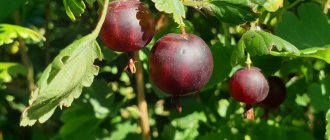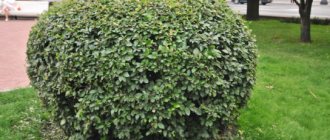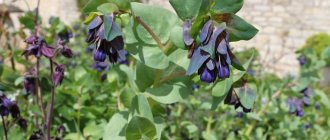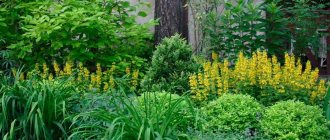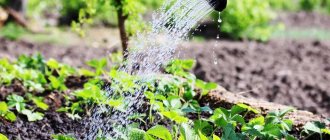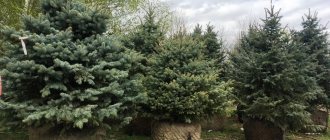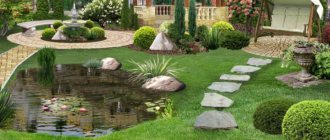Beautiful, convenient and practical - such properties are quite difficult to combine in one object, especially if this object is a plant. And it is especially difficult to choose such plants for a small garden, for example, a six hundred square garden. But they exist! Ornamental shrubs with edible, tasty and healthy fruits are unpretentious, do not require special attention, grow and bear fruit well in central Russia, and some of them even in more northern regions. Choose who you like what!
Classification of perennial shrubs
Perennial shrubs are classified according to 2 characteristics: in relation to light and the degree of resistance to frost.
Winter-hardy shrubs:
- Plants such as yellow acacia, red elderberry, Siberian hawthorn, and figs tolerate severe cold well and do not require special shelter and care during the frosty period of the year.
- The following species are able to withstand frost and cold, but may die at abnormally low temperatures. These are thuja western, viburnum, honeysuckle, cranberry.
- Moderately frost-resistant shrubs include those that tolerate light frosts well and require special shelter for the winter. These include rose hips, mock orange, quince, and camellia.
Light-loving plants love well-lit places. They tolerate drought and lack of moisture well, but still need to be watered regularly. If such perennial shrubs grow in the shade, then their leaves and flowers become smaller and wither, and the fruits lose color and rich taste. These are plants such as rosehip and lilac.
Semi-shade-tolerant plants are unpretentious and grow well in partial shade. They should not be watered too much; they prefer moderate temperatures. These species include hydrangea, honeysuckle and yellow acacia.
Shade-loving perennial shrubs grow in shaded and moist places. They should be watered regularly and abundantly. If they are exposed to direct sunlight, such plants may die, because... The stems and leaves begin to turn yellow and dry out, and the fruits become less juicy. These include white dogwood, hazel, etc.
In order to properly care for perennial shrubs and create the necessary conditions for them to grow, flower and bear fruit, you should know what species they belong to.
How to distinguish edible berries from inedible ones
Birds mainly feed exclusively on edible berries, so if there is droppings on a bush or the ground next to it, and some of the berries are pecked, it can be assumed that they can be consumed by humans. It should be remembered that this method does not always work, and those berries that are not dangerous for birds can cause serious harm to humans.
Birds only peck edible berries
You can also distinguish poisonous berries by taste: poisoning usually occurs after eating 3 berries. Poisonous berries are bitter and tart and astringent in the mouth, while edible ones have a sour or sweet taste and also contain a lot of juice.
Another distinctive feature is that small round berries with shiny and smooth black or red skin are considered especially poisonous. They look attractive, so they may be of interest to beginners and young children.
You can find many different berries in the forest, the main thing is not to pick unfamiliar fruits. After all, the list of edible berries is already quite extensive.
What berries grow in your forests? Which of them can be eaten? Share your experience in the comments.
Rules for placing shrubs on the site
To make it easier to care for perennial shrubs for the garden and vegetable garden, you need to choose the right place for planting. At the same time, various nuances are taken into account. Heat-loving perennials prefer to grow in places where fallen leaves accumulate. This shelter provides them with additional insulation. The thick leaf layer does not allow the soil to freeze, thanks to which the lower leaves and roots of perennial shrubs tolerate winter well.
In addition, leaf humus helps enrich the soil with nutrients. This benefits more than just plants. Earthworms living in such soil begin to actively dig it, increasing air and moisture permeability and improving the structure.
It is not recommended to plant seedlings for the winter on the sunny south side, because... In this area, maximum temperature differences occur. As a result, on clear days, cuttings often get sunburned, and at night, when the temperature drops significantly, they can freeze. On the south side, under the sun's rays, the snow quickly melts, causing the ground to lose its shelter. If you do not take care of high-quality soil drainage, moisture will stagnate in the roots.
It is best to plant perennial shrubs along the western wall of the building, and it is advisable to place heat-loving plants in such areas. Areas on the north side receive little sunlight, and the snow there does not melt for a long time. Such places are suitable for growing frost-resistant shrubs.
It is important to correctly place perennial shrubs relative to each other. On a plot of 6 acres, gooseberry and currant bushes should be placed at a distance of 1 m. The diameter and depth of the holes in which raspberries, Japanese quince, and serviceberry will be planted should be at least 50 cm. Plants should be planted at a distance of 3 m from buildings, which will allow they should not be in the shade throughout the daylight hours.
The planting scheme for berry bushes is:
- chess;
- rectangular;
- square.
The square type of planting is convenient in areas whose length is slightly greater than the width. A rectangular pattern is used for places with an elongated configuration. If the summer resident adheres to the style of landscape design, then in this case the plants are placed freely throughout the garden.
Of the perennial shrubs most often planted on the site are blackberries, shadberry, sea buckthorn, chokeberry, raspberries, gooseberries, red and black currants. Some gardeners can supplement the composition with exotic crops. This can be duke, rhododendron, white mulberry, boxwood, Chinese dereza.
Currants for those with a sweet tooth
This is one of the favorite berries of all those with a sweet tooth. These perennial bushes are unpretentious and produce high yields. You can grow several varieties on your site to evaluate the merits of each.
Black currants are popular due to their large, aromatic berries and vary in terms of ripening. Red currants have large, weighty clusters, sour berries, and the bushes can not be replanted for a long time (up to twenty years). White currants are similar to red currants, but their berries are sweeter. Hybrid varieties are bred by crossing different types of currants and gooseberries.
Currant bushes do not like acidic soil, and a good harvest can be obtained in well-drained, well-loosened soil. During drought, it is necessary to water the bushes, and in the fall we must not forget about removing old branches.
Beneficial and harmful proximity to each other and fruit trees
In order for perennial shrubs to grow and develop well, their mutual influence on each other should be taken into account when planting. This is due to the fact that the proximity of some plants can negatively affect their development. But there is also a beneficial mutual influence. The following plants tolerate proximity to each other well:
- currants - onions, honeysuckle;
- sea buckthorn - chamomile, oregano;
- gooseberry - apple, pear, apricot.
Competitors:
- serviceberry - mock orange, barberry, viburnum, lilac, hazelnut;
- sea buckthorn - all nightshade crops, strawberries.
Among ornamental perennial shrubs, monoplant crops should be distinguished. They are characterized by rapid growth, the ability to invade new areas and suppress the growth of many plants. These include mock orange (jasmine), rose hips, lilac, roses, viburnum Buldenezh, barberry, and sea buckthorn. Red currants do not tolerate gooseberries, birch, pine, cherries, cherries, and plums.
Pyracantha
This evergreen shrub is often called firethorn. In spring, creamy fragrant flowers flaunt against the background of dark green leaves, and in autumn and winter the plant is strewn with glossy berries of scarlet, orange or yellow.
Pyracantha is undemanding in care, but is afraid of frost, so in regions with an unstable climate it is often grown in containers. Pyracantha fruits are edible, but they are very bitter and therefore unattractive to people. But birds love to feast on them in the cold season.
Berry and fruit bushes for the garden
A garden plot cannot do without berry and fruit bushes. Most often, gardeners grow the following plants that bear fruit:
- Raspberries. This perennial shrub produces red, yellow and purple-black berries. There are early, medium and late ripening varieties. Adapts well to any conditions, but is characterized by low productivity.
The most popular variety is remontant. Planted in spring or autumn. Raspberries can grow in sun or partial shade, are resistant to frost and drought, and do not place high demands on the soil. - Gooseberry. It is often called Russian cherry plum. You can reap a good harvest from the bushes. The plant prefers to grow in sunny places and does not tolerate shade or strong humidity.
The berries are red-brown, yellow or green. Planted in September. - Blackberry. Externally it resembles a black raspberry. The berries taste a little sour.
The most common variety is upright. To get a rich harvest of this perennial shrub, you need to fertilize the soil. During the fruiting period, water abundantly. The plant grows well in dry, light and sandy soil. It should be borne in mind that it grows greatly, its growth must be controlled. - Honeysuckle. The berries contain selenium, which prevents aging processes in the body, as well as a large amount of vitamins. The plant blooms beautifully, so it is often used for decorative purposes.
The berries taste a little bitter. This perennial shrub does not like shade, so it is planted in sunny areas. Planted in spring and autumn. - Currant. The berries have beneficial properties and differ in taste. A perennial shrub does not require careful care, and a rich harvest can be harvested from the bushes.
Often, several varieties of currants are grown in garden plots: black, red, white. The plant tolerates severe frosts well. There is a rare variety - golden currant, the berries of which are red, yellow or black. Currant bushes grow best on humus, medium-heavy, sandy and loamy soil with sufficient moisture. - Blueberry. If you care for it properly, you can get a good harvest.
Externally, the berries resemble blueberries. This perennial shrub has special requirements for the soil, so the necessary fertile conditions are created for it. It is recommended to plant blueberries in groups because they need another bush for pollination. This berry bush can grow in shady places. - Sea buckthorn. Bushes can often be found in garden plots. The berries are often used for medicinal purposes. Sea buckthorn oil is especially valued.
There are varieties of early, medium and late ripening. The soil must be covered for the winter, because... This perennial shrub does not tolerate extreme cold. - Irga. The berries of the plant are rich in vitamins, and their taste is reminiscent of cherries. Able to tolerate frost well.
Perennial shrubs do not require special care, but they like to be moistened abundantly. - Garden lingonberry. It is a low-growing perennial shrub with dark red berries. The fruits are dense, medium in size and slightly sour. The plant is not picky about soil.
- Blueberry. This is also a low-growing perennial shrub with short-petioled leaves. The berries are juicy and large, blue-black in color.
The flesh inside is purple. The fruits are rich in vitamins and nutrients. - Thorn (prickly plum). The branches of this perennial shrub are covered with many sharp thorns. The fruits are black-blue and round in shape. They are rich in useful substances.
By planting several varieties of berry perennial shrubs, you can create a variety of fruit plants in the garden.
What are berries
Berries are fleshy fruits of plants containing juice and seeds and a thin skin. They are found on herbaceous or shrubby plants, and occasionally on trees . They are valued due to their high taste, low calorie content and extensive composition of vitamins and minerals.
Wild berries are rich in various vitamins and biologically active substances
Scientists do not essentially distinguish between fruits and berries. The only distinguishing feature is the presence of a multi-seeded fleshy fruit, a thin shell and seeds (one or several) with a dense coating.
Decorative summer shrubs for the garden and vegetable garden
Perennial ornamental shrubs can be divided into two groups: flowering shrubs and those with decorative leaves.
In turn, among the flowering perennial shrubs there are those that can bloom for a long period of time. Typically, such plants are called perennials that bloom all summer. The disadvantages of such plants include the fact that they, as a rule, do not tolerate frost.
Perennial ornamental shrubs that bloom for a short period of time include:
- Dogwood. This is an unpretentious perennial shrub with a dense oval crown. The surface of the leaves is shiny dark green on top, and slightly lighter below. The fruits can be red, pink, black, yellow.
The shrub is unpretentious, grows well in the sun and in partial shade, tolerates calcareous soils, dry and polluted air. In full shade it bears little fruit. - Magnolia. This perennial shrub is highly decorative. The flowers come in a variety of colors: lilac, pink, white, purple, red and cream. They reach 35 cm in diameter.
- Hibiscus. A small plant with large flowers covered in purple or pink spots. The leaf blades are notched, the fruit is in the form of a box.
- Triloba almond (Louisiania). This perennial shrub has leathery lanceolate leaves with a serrated edge and a spherical crown. It blooms with double flowers with many petals and stamens. They are painted pink or white.
- Gumi (Elephant multiflorum). Decorative during flowering period. Its flowers are elongated, bell-shaped with a pleasant aroma. The bright red fruits are covered with silver dots.
Perennial ornamental shrubs that bloom all summer include:
- Buddleya. This perennial shrub has straight or slightly curved stems and dark green leaves. Continuous flowering from June to October adds decorative value.
Flowers of various colors: pink, purple, red, yellow, orange, blue or white. There is an orange eye in the middle of each flower. - Deytsia. It is distinguished by rich and graceful flowering. Bell-shaped flowers are collected in racemes. The plant blooms spectacularly and for a long time, but at the same time it has low resistance to cold.
It is recommended to protect the shrub from frost annually. Deytsia is practically not affected by garden pests. The height of the bush can reach 80 cm. - Tree-like shrub hydrangea. Deciduous perennial shrub with poisonous, decorative flowers one to two meters high. It blooms in large inflorescences of various colors from July to September.
Flower color is: white; red; purple; blue; pink. The plant is demanding on soil; the soil should be slightly acidic. Grows well in sunny, wind-protected areas. It can freeze in frosty winters, so it is advisable to protect the plant from frost.
Shrubs with decorative leaves
- Barberry Thunberg. A shrub with a very branched crown and small leaves, which, depending on the variety, can differ in their colors: dark green; red; rose red; orange-red; golden green; light green. Often used to form hedges.
The perennial does not require special care. It grows well in sunny areas, but can also be planted in semi-shaded areas. An additional decoration of this perennial shrub are the bright red, shiny fruits that appear in the fall. - Evergreen boxwood. The shrub tolerates pruning well and is suitable for creating a decorative border in the form of a green hedge and designing the boundaries of plots. The perennial can be given various shapes. The plant grows well in sunny areas, but can also grow in the shade.
Euonymus
Euonymus does not require formative pruning, so it is ideal for beginner gardeners. This undemanding plant does not particularly stand out in the summer, but in the fall it changes into a bright outfit in shades of pink, red and purple. In addition, beautiful autumn leaves complement the unusually shaped fruits.
- Euonymus Fortune
The most elegant and very frost-resistant euonymus, which decorates the garden all year round thanks to its variegated leaves.
- European Euonymus Red Cascade
One of the best autumn-winter decorations for your garden.
Frost-resistant perennial shrubs
Winter-hardy perennial shrubs include:
- Tree peony. This is a deciduous shrub with a hemispherical shape. The leaves are openwork ornamental, the flowers are simple, double and semi-double, which come in crimson, pink, yellow, purple and white. The plant tolerates frost well, but must be covered for the winter.
- Medlar. It loves hot summers and frost-free winters, but frost-resistant varieties of this perennial shrub have been bred. The large green leaves begin to turn red in the fall. In May it blooms with white flowers. Ripe fruits have hard, sour and tart pulp, which after a while becomes sweet and soft. This red-leaved plant grows well in temperate climates.
- Bladderwort. The spreading bush is represented by drooping branches that form a lush spherical crown. Can reach a height of up to 3 meters. It blooms magnificently in early summer with white or pink flowers with red stamens. The viburnum-leaved bladderwort is a perennial shrub that is often used to create a hedge.
- Yoshta. This is a hybrid of blackcurrant and gooseberry. The leaves are glossy and large in size and do not fall off until winter. Large flowers of rich color.
- Forsythia. The flowers of this perennial shrub are bell-shaped and deep yellow in color. The leaves are oval, with a serrated edge, reaching a length of 15 cm. It is distinguished by early flowering.
- Common heather. It has high decorative qualities. This is a highly branched perennial shrub with small leaves that seem to be rolled into a tube. The fragrant flowers resemble bells and are lilac-pink in color.
Heather can grow on any soil provided there is sufficient light, and its height does not exceed 60 cm. - Weigel. The leaves of this perennial shrub are bright green or variegated, the tubular buds are collected in inflorescences. The color of the petals varies: from a soft white shade to rich purple variations. Some varieties have brown, purplish-red and dark buds. The plant is often used to create alpine slides and hedges.
- Rowan-leaved fieldfare. It can create spectacular thickets due to the large number of root shoots. Pyramidal inflorescences consist of a large number of small flowers of white or cream color. Used to create single and group plantings.
- Snowberry. This perennial shrub is often used to create hedges. Its snow-white fruits continue to hang on the branches even in winter.
- Schisandra chinensis. It is a deciduous perennial shrub that can reach a height of up to 15 m. It is used in landscape design to form a “green wall” with its leaves on arbors, railings and arches.
The plant is planted in garden plots not only for decoration, but also for fruiting. Schisandra fruits are useful for strengthening the immune system and stimulating tissue regeneration. The leaves and shoots have a characteristic aroma of lemon zest, which is why the plant received its corresponding name. The blossoming flowers are initially white and then turn pink. The plant is quite cold-resistant and shade-tolerant.
Japanese spirea is a perennial ornamental shrub that blooms all summer and, in addition, is also frost-resistant. A plant with beautiful flowers and decorative leaves up to 1.5 meters high. It blooms from June to September and has flowers of pale pink or dark pink. Japanese spirea tolerates a variety of soil types but requires full sun exposure. The plant is easy to grow, so it is recommended for beginning gardeners.
Cinquefoil shrub (shrub cinquefoil) can also be classified as a perennial that blooms all summer. This is a lush perennial shrub, the refined shoots of which form a lacy crown in the form of a hemisphere or ball. The curly appearance is given by carved leaves divided into 7 parts. Their color is greenish with a silvery tint. The buds consist of 5 round petals, with 30 stamens located in the center.
This perennial blooms from mid-May to October. Cinquefoil shrub is quite unpretentious to growing conditions. The plant reaches a meter in height and develops well in well-lit, sunny areas. The bush is often used as a border to decorate the boundaries of plots and create low hedges.
Shrubs with decorative leaves
- Silver goof. The plant has silver foliage, which does not lose its attractiveness even in winter. This perennial shrub can withstand severe frosts and is easy to grow.
- Euonymus. Its decorative effect lies in the leaves, which have different colors: white, yellow, bronze, purple. The fruits of the perennial have a bizarre shape; as they ripen, they begin to turn scarlet, pink, yellow or burgundy.
- Cotoneaster brilliant. It grows to a height of 1-2 meters, has dark green, shiny leaves, turning into dark red, orange, and yellow in autumn. Sunny or semi-shaded places are suitable for cotoneaster.
The plant is completely resistant to frost and drought. It tolerates pruning well - it is one of the best deciduous perennial shrubs for continuous hedges.
Decorative, berry and fruit shrubs for the garden and vegetable garden can make the site attractive and spectacular.
Krasivokrudnik
From the name of this shrub it becomes clear that its fruits are the most decorative. In September-October, purple-violet berries appear against a background of red and golden leaves. They remain on the plant even after leaf fall.
- The beautiful fruit will color the most boring garden
To ensure that the garden does not lose color even in the autumn months, it is worth planting a beautiful fruit in it.
- Beautiful fruit Bodiniera Profusion
An ornamental shrub with unusual deep purple fruits that remain on the plant all winter.
Twigs strewn with bright berries are suitable for creating winter bouquets. They retain their shape for a long time and go well with many plants.
Shade-loving perennials
Every piece of land should be of benefit to the gardener or gardener; either something useful or something beautiful and pleasing to the eye should grow everywhere. The problematic point in bringing this idea to life are dark places. For such areas, you can select shrubs or vegetables that can grow in partial shade or shade.
Shade-loving berry perennial shrubs include:
- Currant;
- Yoshta;
- Blueberry;
- Raspberries;
- Blackberry;
- Dogwood.
Shade-loving ornamental perennial shrubs include:
- Hydrangea paniculata. The plant can grow in shady areas, although it blooms less in such conditions.
- Rhododendrons These shade-loving shrubs prefer partial shade and even shade. They bloom beautifully in May and early June. Rhododendrons need loose sandy-humus and acidic soil with moderate moisture.
Elder
In May-June, elderberry decorates the garden with numerous inflorescences, and at the end of August, fruits form in place of the flowers. The red elderberry, as you might guess, is red, the black elderberry is blackish-purple, and the Canadian elderberry is dark purple. Red fruits fit more organically into the autumn garden palette, but they are inedible, unlike dark berries.
- Black elderberry Black Tower
A column-like tall shrub with fragrant inflorescences and bright berries, from which you just can’t take your eyes off all season.
Elderberry of any type and variety is good both as a “soloist” and as a participant in an attractive composition in the vicinity of other ornamental shrubs.
Low-growing perennials
Low-growing perennial shrubs usually include plants whose height does not exceed 1 meter. Various crops of low-growing perennials are usually used to form a beautiful background or to create hedges. In addition, low-growing shrubs will help reduce the number of weeds growing.
Low-growing perennial shrubs include:
- Common heather;
- Deytsia is graceful;
- Cotoneaster horizontal;
- Cinquefoil bush;
- Pachysandra apex is an evergreen, low-growing perennial shrub that grows quickly and is suitable for shady areas in the garden. The disadvantages of this plant are that it does not bloom for a long time in April;
- Japanese spirea (meadowsweet);
- Varieties of Barberry Thunberg: Edmiration (bush height 0.5 m, dark red leaves with a yellow border) and Bagatel (bush height 0.3 m; red-burgundy leaves);
- Hydrangea Nikko Blue (bush height 1 m);
- Dogwood, or Svidina blood-red Compress (bush height 0.8 m);
- Weigela blooming Bristol Ruby (bush height 60 cm);
- Buddleia Davida Blue Chip (bush height 1 m).
Rate this article:
Holly holly, or holly
Holly is widely used on Christmas Eve, especially in the West. Branches with dark green glossy leaves and bright fruits are used as Christmas decor. On the site, this shrub is used mainly as a hedge. The small holly berries are most often red, but yellow and orange are sometimes found. All of them are inedible.
- Holly holly - useful information about planting, care and cultivation
Holly, or holly, is not only a symbol of Christmas, but also a magnificent plant for the garden.
Blueberry
Blueberry is a very low, dense shrub that easily tolerates winter frosts. In its natural environment, it can be found in mixed or coniferous forests, because, like conifers, it prefers acidic soil. Blueberries love shade, so they should be planted under trees or in other shaded areas.
Description
Blueberry is a low-growing perennial plant from the heather family, the height of the bush does not exceed 35 cm. The root is long, but spreads in breadth. The leaves are smooth, up to 30 mm long, green, lightly covered with hairs. It begins to bloom in May with whitish-pink flowers. Blueberries are very similar to honeysuckle fruits, differing only in their spherical shape and size.
Blackberry
Blackberries are a forest berry shrub whose berries look like a mixture of raspberries and mulberries. It would be most common to find it in the forest, but not so long ago blackberries were domesticated, and many varieties have already been developed that are adapted to certain climatic conditions.
Description
Blackberry is a perennial shrub belonging to the Rosaceae family. Under certain conditions it can reach a height of up to two meters. Its straight, long branches have gray bark with a brownish tint, covered with sharp thorns, but hybrids can be found without them.
Rules of care
Only planted blackberries need to be watered as often as possible for 45 days. Old bushes also need frequent watering, especially during dry periods. Settled rainwater is most suitable for irrigation. It is better to pour running water into a barrel or other vessel and let it sit for several days.
Pruning is carried out every autumn or spring. First of all, dry and drying branches are cut off, and then branches that have already bear fruit undergo mandatory pruning.
Raspberries
This subshrub has gained popularity due to its enviable vitality and sweet berries. First, plant common raspberries: its remontant sister is more capricious.
Raspberries leave no one indifferent
Peculiarities
Raspberries will grow well in a quiet, sunny corner of the garden, where a lot of snow accumulates in winter. However, this should not be a lowland in which moisture stagnates for a long time. This berry plant has a special love for drained, fertile and at the same time moisture-absorbing soil with an acidity of 5.7-6.5 pH.
Landing
Lignified seedlings are planted in early spring or in the first half of autumn, green shoots - throughout the summer. The soil is enriched with organic and mineral fertilizers; young plants are not buried when planting. With the strip growing method, raspberries are planted in rows with row spacing of 1.5-2 m, and then 8-10 shoots are kept on each linear meter. With the bush method, planting holes are prepared with a step of 0.6-0.7 m, and then 4-5 shoots are left in each bush annually. Supports for gartering bushes are required in both cases.
Lignified seedlings are planted in early spring or early autumn
Care and pruning
Water the plants in a timely manner, preventing the soil from drying out, but avoid making it waterlogged. With a lack of moisture, the number of ovaries sharply decreases, the berries turn out small and tasteless.
In early spring, treat raspberries with nitrogen, and during the filling period - with a complex preparation; after fruiting - phosphorus and potassium. Particular attention to organic matter - annually apply humus under the raspberries or cover the surface of the soil with organic mulch throughout the season, renewing its layer as it rots.
After collecting the last berries, cut out the fruiting shoots
Immediately after picking the berries, cut out the fruit-bearing shoots to zero, leaving strong young growth, and next spring shorten it by 10-15 cm. Throughout the season, regularly cut out excess root shoots.
Interesting varieties
Among the varieties of ordinary raspberries, 'Meteor', 'Lazarevskaya', 'Zhuravlik', 'Brigantina', 'Novost Kuzmina', 'Krasa Rossii' and others deserve attention.
You can choose planting material in our market. Section Traditional raspberry seedlings.
Blackberry
In terms of healing properties and taste, it surpassed raspberries. The shrub with a perennial rhizome was not in demand due to its sharp thorns. However, thanks to breeders, varieties without thorns have appeared. It has an external resemblance to black raspberries. It tastes sour.
Varieties of blackberries
- Straight-growing blackberry is considered the most common. Bushes give a good harvest and save space on the site.
- Semi-creeping varieties are extremely rare. Experienced gardeners recommend planting this particular variety.
- Remontant blackberry - allows you to harvest 2 harvests per season: June, August.
Features of planting berries
Shrubs are planted in early spring or autumn, when they are in a leafless state.
Seedlings in bags, boxes, or with an open root system must be selected very carefully. Crops purchased in containers take root better; they are replanted from April to October.
Bush forms prefer non-acidic, moist, well-drained loams. Choose a place for planting that is illuminated. Planting holes are prepared with a depth of up to 40 cm, spaced from each other by a meter to one and a half. Add compost, 90 g of superphosphate, 40 g of potassium chloride to the hole, cover the mixture a little with soil substrate.
The roots of the bush are straightened, sprinkled with earth, the soil is thoroughly compacted, the root collar is slightly buried, and the seedling is watered abundantly. The hole is mulched with gravel, peat, bark, pine needles, and sawdust. The shoots are shortened by five buds, and the cuttings are used to produce new seedlings. The four upper buds are left on the cuttings, small cuts are made at the bottom and they are stuck into moist soil. The cuts will be overgrown with callus and roots will sprout.
Berry plants are unpretentious in care: they are not afraid of frost, wind, are resistant to diseases, and with regular watering they bear fruit abundantly every year.
After harvesting, the bushes are thinned out and old, damaged branches are removed. The procedure stimulates the development of young, strong shoots. They become productive the next year.
Early honeysuckle
Honeysuckle is often called the “rejuvenating berry” because of the selenium it contains, known as a strong antioxidant. However, honeysuckle also contains many other useful vitamins, which is why it is valued. This plant blooms beautifully, so it is often used to improve the area. The berries have a bitterish characteristic taste and can be collected in late spring.
Long-fruited varieties have medium-sized bushes and berries that resemble a cylinder in shape. Mid-late varieties allow you to harvest almost until October. Hybrid varieties are obtained by crossing other types of honeysuckle.
It is better to plant bushes before the beginning of the growing season in spring or autumn. Since the bushes are uncomfortable in the shade, it is better to choose a sunny place for them. Honeysuckle grows quite slowly, so that it strengthens and produces a good harvest, it should be fed more often. It is necessary to regularly cut off dried branches, and bushes from 6 years old need sanitary pruning.
Blueberry
In many regions it is considered a rare berry. More often it can be found in the wild. There is a growing interest among gardeners in growing promising varieties on their plots. With proper care, you can have a good harvest of healthy berries.
Blueberry varieties
- Tall varieties do well as hedges. Their bushes are branched, the berries have an intense blue or dark blue color.
- Low-growing blueberries bloom luxuriantly in spring, delighting with excellent yields and neat bushes.
- Southern varieties were developed through hybridization for cultivation in arid climates.
Features of care
At home, it is better to grow not wild, but more adapted cultivated varieties. The bushes take root well regardless of the method of planting by seeds or dividing the bush. Pruning is carried out on adult bushes, starting from 5-6 years of plant life.
Honeysuckle
Be sure to allocate a place on your site for edible honeysuckle, which will annually provide large, tasty berries at the earliest possible date.
Honeysuckle is an early ripening crop
Peculiarities
Honeysuckle loves loamy and sandy soils rich in humic compounds, but refuses to develop and bear fruit in acidic soil, in damp places, and in shade.
Landing
This berry can be planted in the spring before the buds open and in the summer after growth has finished, but the best time is September. Plant young plants in well-fertilized holes so that the root collar after planting is 4-6 cm below the soil level.
Care and pruning
Watering is moderate, but in dry weather - regular. Consumption - 2-3 buckets per adult bush. You should not allow a lack of moisture in the soil during the period of filling the berries, otherwise they will become bitter.
With regular rainfall, the berries will turn out tasty without any extra hassle.
Honeysuckle is fed three times per season: in the spring - with nitrogen fertilizers; during the ripening period of berries - a complex of macro- and microelements; after fruiting, phosphorus-potassium preparations and humus are added.
Every autumn, cut out unproductive, weak and thickening shoots, as well as excess root shoots. Since this berry bears fruit on annual shoots, it is not worth shortening the growth of the current season.
Regularly perform sanitary pruning of honeysuckle
Sea buckthorn against diseases
Sea buckthorn is known as a valuable traditional medicine that can be used for the prevention and treatment of certain diseases. For this reason, gardeners grow it in their garden plots. However, wild bushes of this berry can be found near bodies of water, which is why they are also called “sea thorns.”
Garden varieties differ in different periods of berry ripening. Botanical varieties are distinguished by the absence of thorns on the branches. But varieties with large fruits also do not have thorns and taste sweeter.
A high yield of sea buckthorn can be achieved if the male and female species are planted close to each other. During drought, you will have to water the bushes. For the winter, the soil should be covered, because the shrubs are not adapted to frost. In the spring it is necessary to prune, and bushes 8-12 years old will have to be trimmed to a stump.
